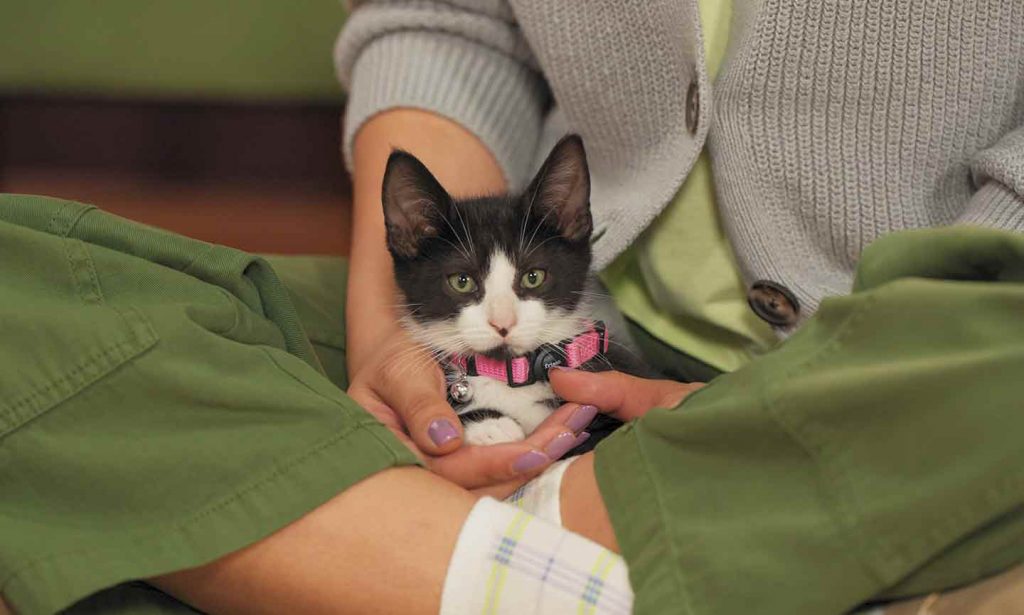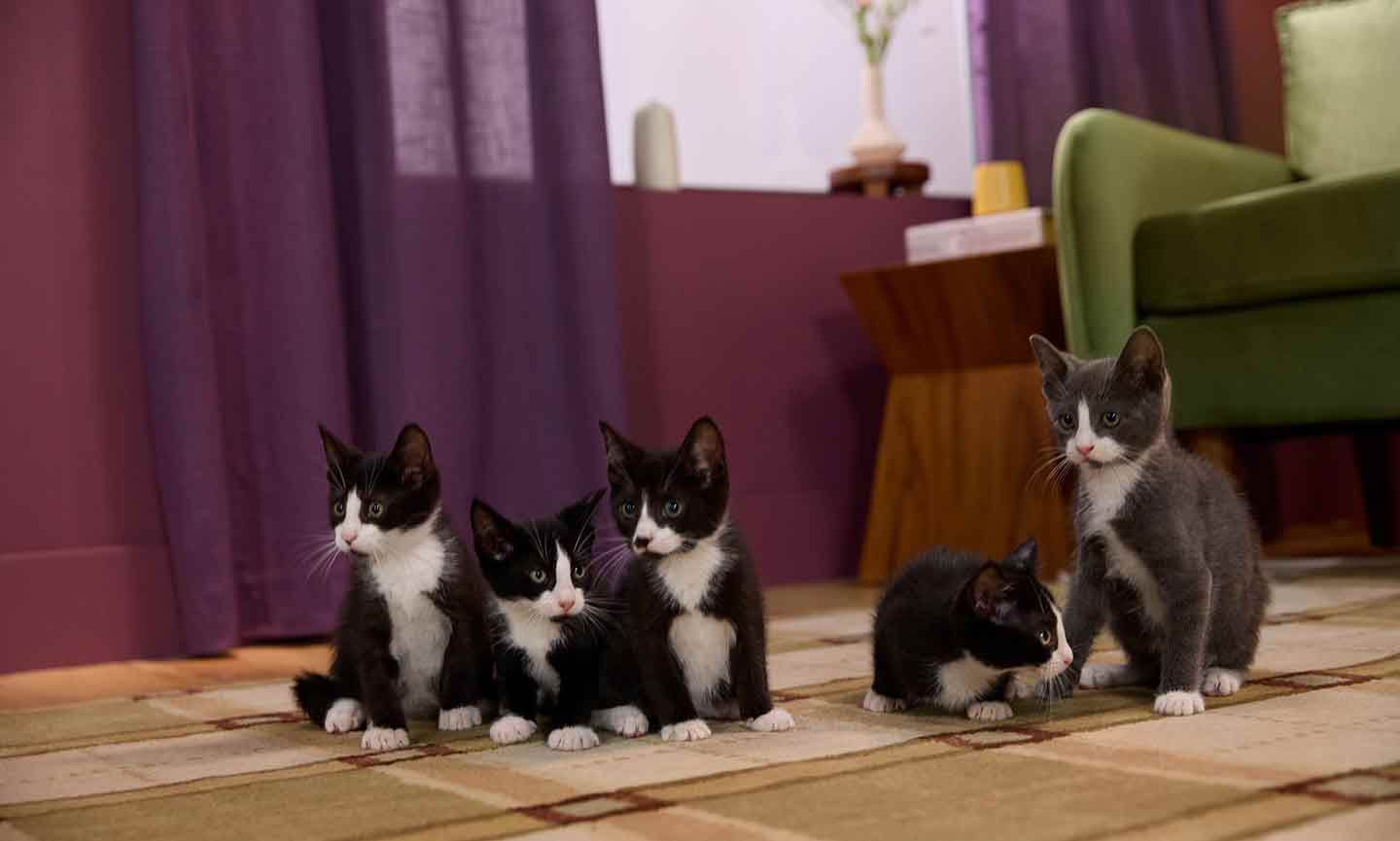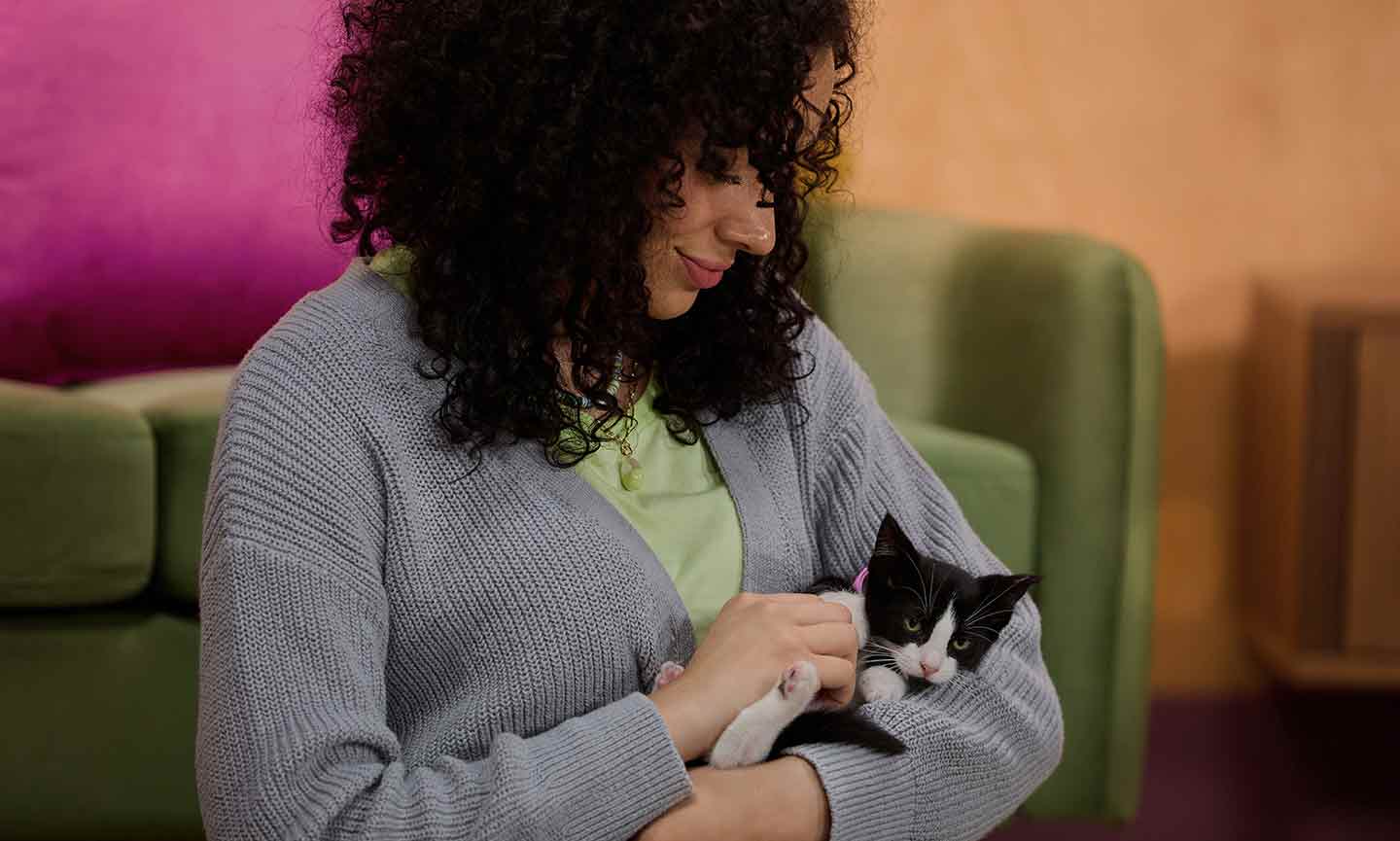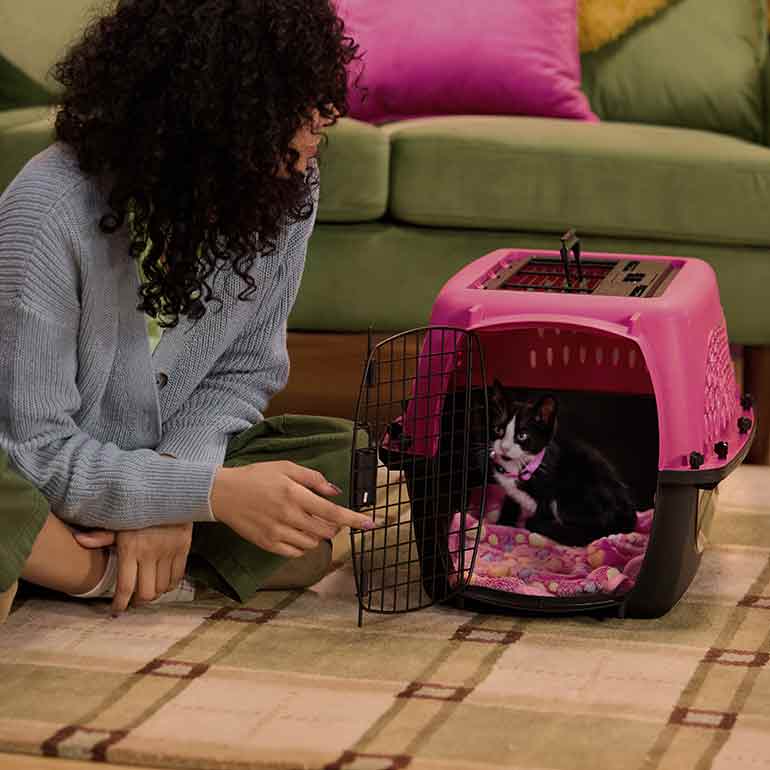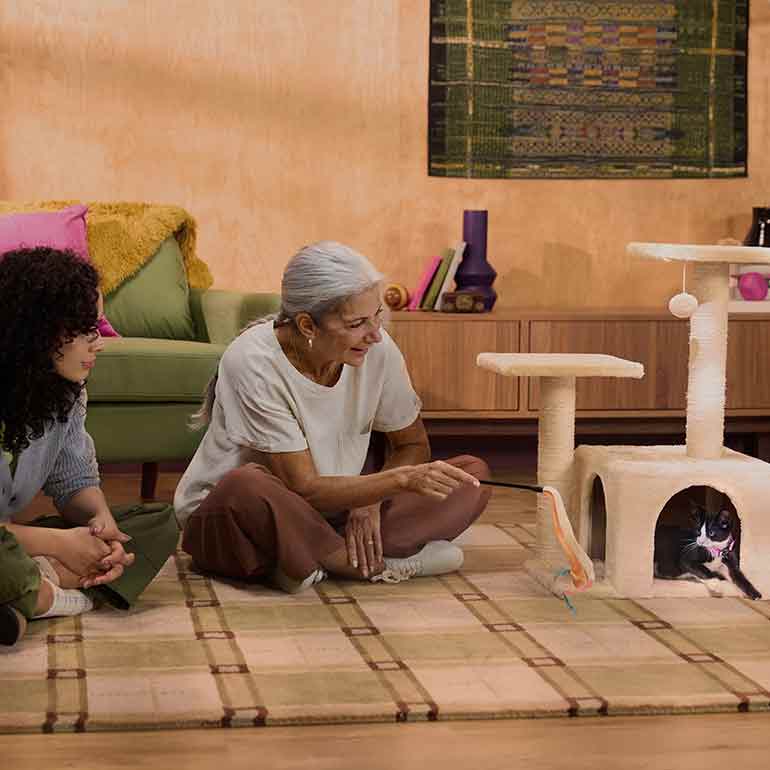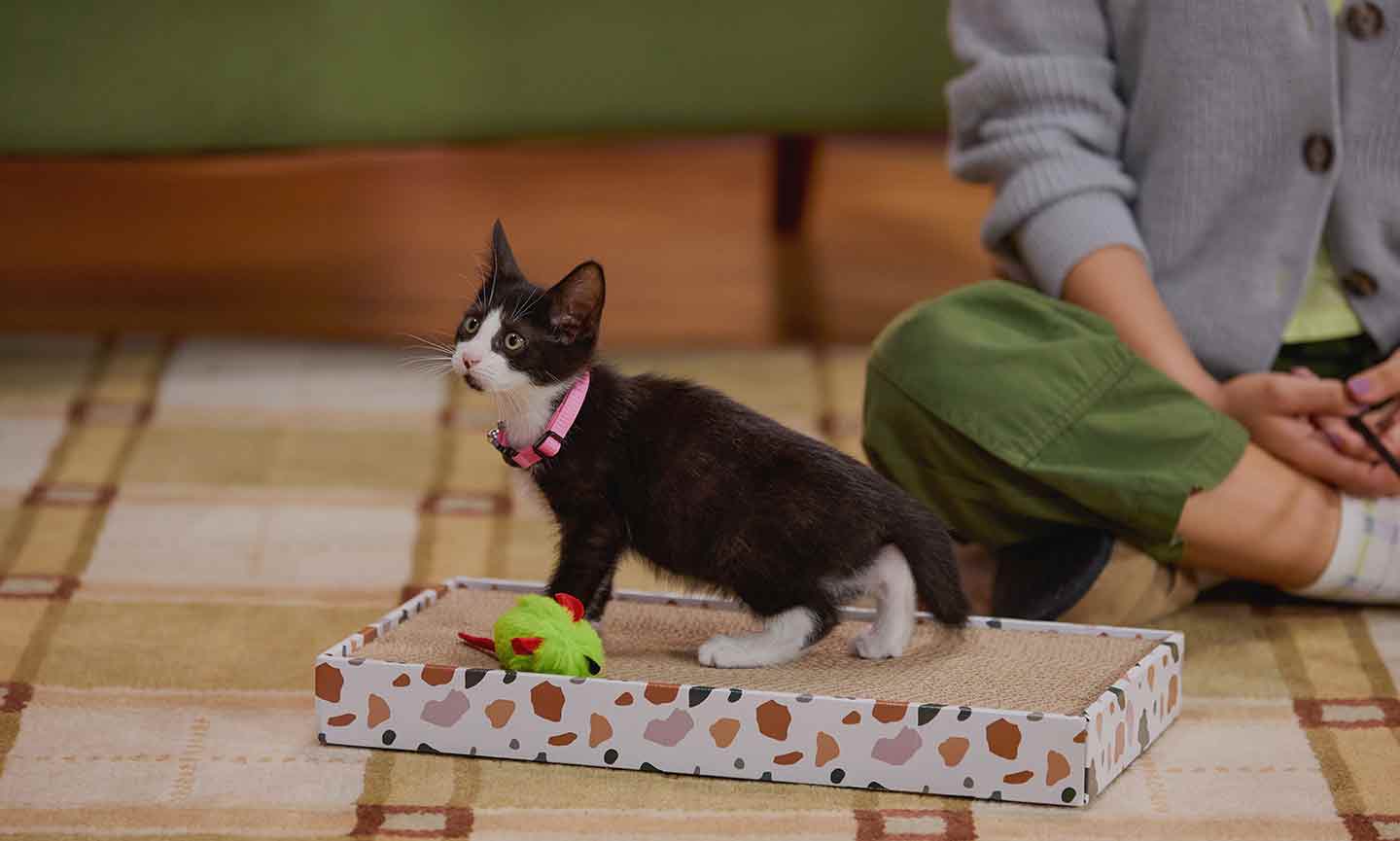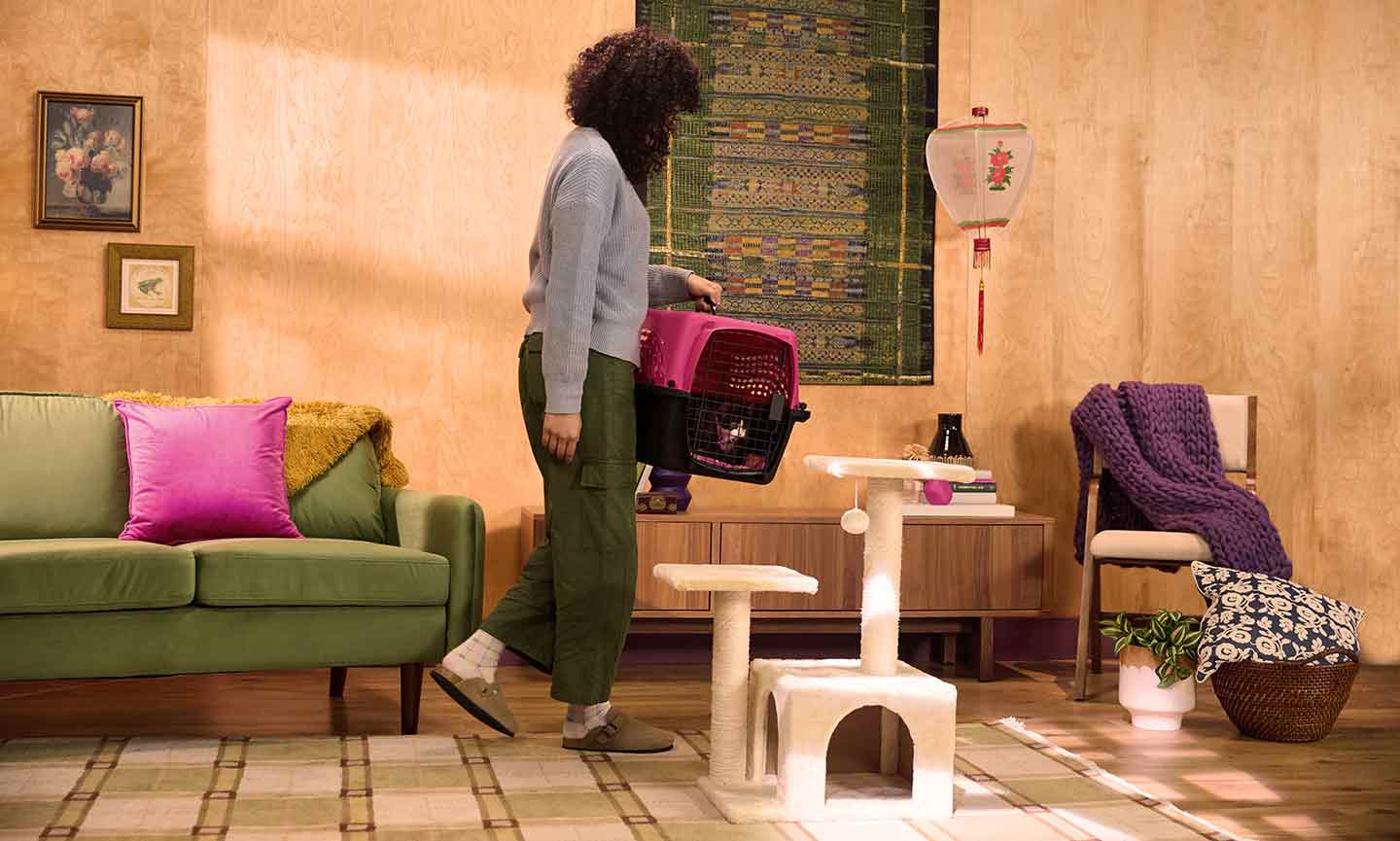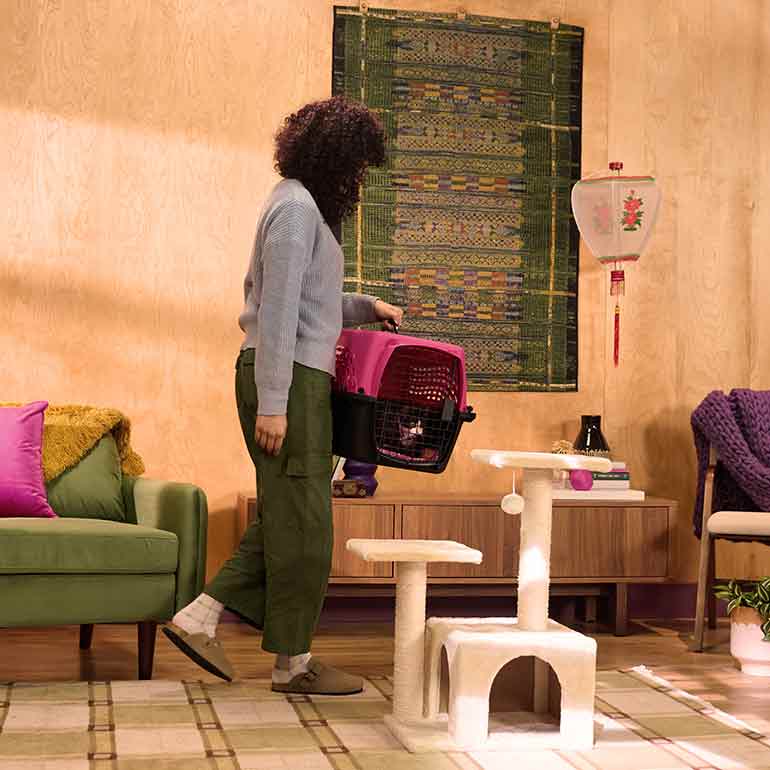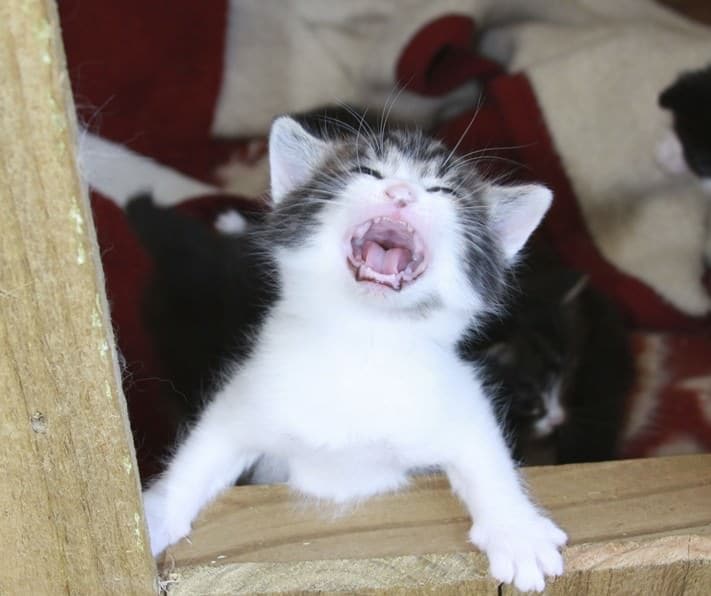Your new kitten is a perfect little fluffball full of purrs and cuddles. But as they grow into an adult cat, they’ll need your help to adjust and learn about the world around them. The process of introducing your kitten to new people, places and experiences is called socialization, and it can help your young cat to grow up into an outgoing and friendly adult cat.
In This Guide
What Is Kitten Socialization?
In a nutshell, socializing kittens means gently introducing them to stimuli they’ll likely encounter throughout their lives, including people, pets, sounds, toys, food and beyond, explains Kira Ramdas, DVM, president of the American Association of Feline Practitioners who’s based in The Woodlands, Texas. The socialization process exposes them to a wide variety of experiences so they can learn to accept new environments, animals and humans.
A properly socialized kitten:
- Has experienced good maternal care from their mother cat
- Is raised alongside the other kittens in their litter
- Has been exposed to human contact daily from very early age
While not every young kitten will have this well-rounded experience, you have an opportunity to help further socialize your new cat via daily gentle handling and introducing them to the many facets of their world.
When a cat is well socialized, they’ll be more equipped to handle the following:
- People of all ages, races, and genders
- Other animals, including family pets
- The sounds, smells and sights of their environment
- Varying types of toys
- New foods
- New places (including a veterinary office)
Conversely, an unsocialized kitten will likely experience higher levels of fear, discomfort and distrust in their world. The most extreme of these examples are adult feral cats, which are unlikely to let humans or other animals get near them for the entirety of their life.
When Is the Best Time for Kitten Socialization?
Ideally, kitten socialization should start as early as possible. There are two main socialization periods:
- 2 to 9 weeks old: This is the primary socialization window. Kittens are usually kept with their moms and littermates during this period, so they can learn the basics of interacting with other cats from them.
- 8 to 16 weeks old: Kittens usually get adopted during this period, and it’s the best time for you to interact with them by gently petting and holding them, introducing new toys, sampling some new foods, and introducing them gradually to other family members and pets in the home.
What Happens if You Miss This Window?
There’s some wiggle room around the post-16 week mark where you can still work toward kitten socialization. Generally speaking, though, many older kittens and adult cats who haven’t been exposed to human touch and care are more difficult to socialize. That doesn’t mean it’s impossible, notes Steve Dale, a certified animal behavior consultant (CABC) in Chicago, Illinois: “It most certainly can happen with tons of patience. However, living day to day with a fearful and untrusting cat can be darn challenging for the human and animal.”
If you’re working with a feral cat over 16 weeks old, it’s unlikely that they’ll learn to be a good housecat. In these cases, experts recommend that cats go through a process called trap-neuter-return (TNR), which involves having the cat vaccinated and sterilized then returned to the place they were found. Find out more about TNR and how to find a program near you.
How to Socialize a Kitten
1Keep Kittens With Their Family Until They’re Weaned
Age: Birth to 2 weeks old.
The first weeks of a kitten’s life are a special time for them and their mama cat. During this time, it’s best to avoid touching the kittens unless absolutely necessary (for example, to check if they are breathing). Some mama cats will react aggressively to protect their kittens from what they may perceive as a threat from you.
Of course, you’ll have to handle kittens who are without their mothers and need to be bottle fed. In this case, “it can help for the single kitten to be around another cat—even if it is an adult cat—to learn proper socialization,” says Nicole Savageau, VMD, a veterinarian with The Vets in Austin, Texas. Without an older cat around, kittens can become overly attached to the person who bottle feeds them, and are prone to being more fearful around new animals or people.
2 Practice Gentle Handling
When to Start: 2 to 4 weeks of age.
At this point, kittens may be introduced to soft and careful touches, such as holding them, stroking their belly, light petting and brushing. Now is a good time to introduce simple “examination” movements that can help prepare them for future important touches by you and the vet, too. These include:
- Opening their mouth
- Looking in their ears
- Touching their toes
- Lifting their tail
Ideally, the cat care provider they’re with is doing these things until the kitten is old enough to be adopted (around 8 weeks). Once you’ve adopted your cat, you should continue doing these things routinely as they continue to grow older.
3Introduce Them to Their Cat Carrier
When to Start: 2 to 4 weeks of age.
Plan on traveling anywhere with your cat? Whether it’s an adventure-packed vacation or just a routine visit to the vet, it’ll be helpful to introduce your kitten to their cat carrier so they can become familiar with this environment. Follow our tips on helping your cat get comfortable with their carrier.
Looking for the best cat carrier for your kitty? Here’s how to pick the best one.
4Introduce Them To Other People & Pets
When to Start: 3 to 7 weeks old.
As your kitten gets a bit older, they can gradually start meeting additional humans and pets. Over time, expose them to different types of pets and a variety of humans—young, old, noisy, meek, tall and short—always ensuring positive exposure. Have the new visitor offer a treat, for example.
Of course, new interactions come with risks. Follow these guidelines to protect your kitten’s wellbeing, of course:
- Introductions should be done in a familiar environment for your kitten, with available spaces for them to escape if they feel afraid, such as cat caves, cat trees or cat shelves.
- Allow your kitten to approach the new people or pets, not the other way around.
- Exploring on their own terms will help them feel secure.
- The kitten should not be forced to stay in a situation they’re not comfortable with. Again, if you see signs of stress, such as a tensed body or meowing, remove your kitten from the situation.
- If you plan to introduce your kitten to other cats, ensure that those cats are fully vaccinated and healthy in advance.
Find out more about how to introduce cats and how to introduce a cat to a dog.
5Provide New Toys, Foods, and Experiences
When to Start: 8 to 16 weeks old.
Around 8 weeks old, your kitten will likely be curious about everything they lay eyes on. Encourage that curiosity by providing plenty of new ways to play:
- New toys: Let your kitten explore a variety of toy types, including tunnels, teasers and wands, and interactive toys.
- New hangout spots: A cat tree or cat shelves give your kitten plenty of practice climbing and jumping, and higher vantage points can also make some cats feel more secure.
- New essentials: Bringing your kitten home for the first time? Don’t forget to show them their cat bed, litter box and food and water bowls, with plenty of praise and treats to encourage them to use them.
6 Keep the New Experiences Coming
When to Start: Immediately, and continue throughout their life.
All the above steps will help your kitten become a socialized creature who feels comfortable and safe with humans and other animals, and in the world at large. Once your cat reaches adulthood, continue giving them love and affection and showing them the wonders of the world. This could include adventures like:
More Cat Adventures
Share:
